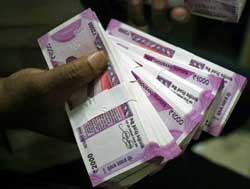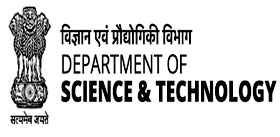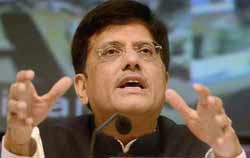August 2020 Economic Affairs
Sakshi Education
- Increased Investments through P-notes
 According to SEBI data, the value of participatory note (P-note) investments in Indian capital markets increased to Rs. 63,288 crore till July 2020-end.
According to SEBI data, the value of participatory note (P-note) investments in Indian capital markets increased to Rs. 63,288 crore till July 2020-end.
This is the fourth consecutive monthly rise in investments through P-notes.
Key Points
About the Investments:
Of the total Rs. 63,288 crore invested through the route till July, Rs 52,356 crore was invested in equities, Rs.10,429 crore in debt, Rs. 250 crore in hybrid securities and Rs. 190 crore in the derivatives segment.
Derivative is a financial instrument which derives its value from the underlying assets.
Monthly Rise:
The investments through P-notes wasRs 62,138 crore at the end of June 2020.
Prior to that, investment level was at Rs 60,027 crore and Rs 57,100 crore at the end of May and April, respectively.
The investment level had fallen to over a 15-year-low of Rs 48,006 crore at the end of March 2020.
The figure at the end of March 2020 was the lowest level of investment since October 2004, when the total value of P-note investments in the Indian markets stood at Rs 44,586 crore.
The lower figure in March came amid significant volatility in broader markets on concerns over the coronavirus-triggered crisis.
- Credit Guarantee for NBFC-MFIs
National Bank for Agriculture and Rural Development (NABARD) has introduced Partial Credit Guarantee Programme for Non-Banking Financial Company (NBFC) - Micro Finance Institutions (MFIs).
The programme aims to ensure unhindered flow of credit in rural areas hit by the Covid-19 pandemic.
Key Points
Under the programme, NABARD will provide partial guarantee on pooled loans extended to small and mid-sized MFIs.
This has come in the backdrop of most MFIs being excluded from the moratorium benefits from banks, creating a dip in collections, resulting in widening asset-liability mismatch, credit downgrades and spike in cost of fresh funding.
NABARD will facilitate Rs. 2,500 crore funding in the initial phase and will further increase the funding.
The program is expected to cover over 1 million households across 28 states and 650 districts.
- NABARD launched Structured Finance and Partial Guarantee Programme
National Bank for Agriculture and Rural Development (NABARD) has unveiled a Structured Finance and Partial Guarantee Programme to Non-Banking Finance Companies (NBFCs) and Microfinance Institutions (MFIs).
It is a dedicated debt and credit guarantee product. The programme aims to ensure the undisturbed flow of credit in COVID-19-affected rural areas.
To launch the programme, NABARD has signed agreements with Vivriti Capital and Ujjivan Small Finance Bank.
Structured Finance and Partial Guarantee Programme:
Under the Structured Finance and Partial Guarantee Programme, NABARD will provide partial guarantee on pooled loans extended to small and mid-sized Microfinance Institutions (MFIs).
It will help facilitate Rs.2,500 crore funding in the initial phase and is expected to be scaled up in the future.
The program will cover over 1 million households across 28 states and 650 districts.
It is expected that the partially guaranteed loan facility will catalyze financing to millions of households, agricultural, and business markets to sustain in the post-COVID-19 situation.
With NABARD as a guarantor and a convincing product construct in place, the programme has attracted many banks and small finance banks to participate.
- Assessment of Economic Impact of Covid-19: DSGE Model
The Reserve Bank of India (RBI) is using Dynamic Stochastic General Equilibrium (DSGE) model to provide a tentative and proximate assessment of the likely impact of Covid-19 and the subsequent lockdown on the Indian economy.
Key Points
DSGE modelling is a method in macroeconomics that attempts to explain economic phenomena, such as economic growth and business cycles, and the effects of economic policy, through econometric models based on applied general equilibrium theory and economic principles.
Econometrics is the application of statistical methods to economic data in order to give empirical content to economic relationships.
General Equilibrium Theory is a macroeconomic theory that explains how supply and demand in an economy with many markets interact dynamically and eventually culminate in an equilibrium of prices.
RBI has considered three main economic agents, viz., households, firms and the government.
Because of lockdown, households have to stay at home and therefore, reduced labour supply to firms and consumption and income fall due to non-availability of non-essential items.
- Economic Measures Suggested by McKinsey
The McKinsey Global Institute (MGI) has released a report titled 'India's turning point: An economic agenda to spur growth and jobs'.
The report identifies a reform agenda that could be implemented in the next 12 to 18 months to increase productivity and create jobs.
Measures Suggested:
Global trends such as digitization and automation, shifting supply chains, urbanization, rising incomes and demographic shifts, and a greater focus on sustainability, health, and safety can become the hallmarks of the post pandemic economy.
Privatisation of 30 or so of the largest state-owned enterprises to potentially double their productivity.
Government also had a focus on privatisation under the Aatmanirbhar Bharat Package.
Framing sector-specific pro-growth policies to attract investment in manufacturing, real estate, agriculture, healthcare and retail.
Creation of flexible labour markets for industry with better benefits and safety nets for workers.
Improvement in Infrastructure: India needs to unlock supply in land markets to reduce land costs by 20-25%, enable efficient power distribution to reduce commercial and industrial tariffs by 20-25%; and improve the ease and reduce the cost of doing business.
India needs to triple its number of large firms having revenues of over USD 500 million.
Streamlining fiscal resources can deliver USD 2.4 trillion in investment while boosting entrepreneurship by lowering the cost of capital for enterprises by about 3.5 percentage points.
Measures are required to channel more household savings to capital markets, to reduce the cost of credit intermediation, and to streamline government finance.
Creation of a ‘bad bank’ can take care of the inoperative assets.
A bulk 60% of the reforms will have to be undertaken by states and the remaining 40% by the Centre.
- GST Council Meet
Recently, the 41st Goods and Services Tax (GST) council meeting was held to discuss the issue of compensating states on account of revenue loss due to implementation of GST and fall in cess collections.
Key Points
The economic slowdown had reduced both GST and cess collections in FY 2019-20, resulting in a 40% gap (shortfall) between the compensation paid and cess collected.
The central government paid over Rs.1.65 lakh crore in 2019-20 as GST compensation by utilising the excess cess amount collected during 2017-18 and 2018-19.
The state’s GST revenue gap in 2020-21 is expected to be about Rs. 3 lakh crore, while cess collections are only projected to reach Rs. 65,000 crore, leaving a shortfall of Rs. 2.35 lakh crore.
- Government think tank flags chemical industry’s infra shortcomings
 Report prepared by the Technology Information Forecasting and Assessment Council (TIFAC).
Report prepared by the Technology Information Forecasting and Assessment Council (TIFAC).
The Technology Information, Forecasting and Assessment Council (TIFAC) is an autonomous technology think tank under the Department of Science & Technology (DST), Government of India.
Details:
The report flags the lack of technology, plants and infrastructure in the chemical industry of India to manufacture key chemicals in a cost-effective manner.
Solvent and chemicals manufacturing costs in India are over 15% more than China.
India depends on China for 67% of chemical intermediates and API that it needs to manufacture drugs and export. The United States and Italy are the other countries that India depends on for API.
The report underlined that India had nearly stopped manufacturing several key active pharmaceutical ingredients (API).
- RBI’s Positive Pay system
The new ‘Positive Pay’ mechanism was recently introduced by the Reserve Bank of India (RBI).
Key Points
Issuers will be able to send all details to their bank, thereby ensuring faster clearance of cheques above Rs 50,000.
All cheques will be processed as per the information sent by the account holder at the time of issuance of cheques.
This will cover approximately 20 per cent of transactions by volume and 80 per cent by value.
It will make cheque payments safer and reduces instances of frauds.
Positive Pay Mechanism?
Positive Pay is a fraud detection tool adopted by banks to protect customers against forged, altered or counterfeit cheques.
It crosses verifies all details of the cheque issued before funds are encashed by the beneficiary.
In case of a mismatch, the cheque is sent back to the issuer for examination.
By following such a system, a bank knows of a cheque being drawn by the customer even before it is deposited by the beneficiary into his/her account.
- Partial Credit Guarantee Scheme (PCGS) 2.0
As part of Aatmanirbhar Bharat Abhiyan, announced by the Government, the Partial Credit Guarantee Scheme (PCGS) 2.0 was launched to provide Portfolio Guarantee for purchase of Bonds or Commercial Papers (CPs) with a rating of AA and below issued by NBFCs/HFCs/ MFIs by Public Sector Banks (PSBs).
BACKGROUND:
Under the scheme, any PSB can purchase securities (minimum rating of ‘AA’) of financially-sound non-banking finance companies.
The objective is to address temporary asset-liability mismatches of otherwise solvent NBFCs/Housing finance companies (HFCs) without having to resort to distress sale of their assets to meet their commitments.
The government will provide a one-time, six months’ partial credit guarantee to public sector banks for first loss of up to 10%.
Also, these NBFCs/HFCs are mandated that the CRAR (capital to risk-weighted assets ratio) shall not go below the regulatory minimum while exercising of the option to buy back the assets.
- Bhadbhut Project
The Gujarat government recently awarded the contract for the Bhadbhut project in Bharuch, Gujarat. It has faced protests from local fishermen for its likely impact on fishing patterns, notably those of hilsa.
BACKGROUND:
It is planned to be a 1.7-km causeway-cum-weir barrage with 90 gates, across the river Narmada, 5 km from Bhadbhut village, and 25 km from the mouth of the river, where it flows into the Gulf of Khambhat.
The barrage will stop most of the excess water flowing out of the Sardar Sarovar Dam from reaching the sea and thus create a “sweet water lake” of 600 mcm (million cubic metres) on the river.
The barrage will also have a six-lane road that will connect the left and right banks of the river and provide shorten the land distance between two large industrial estates in Surat and Bharuch.
The project also aims to prevent flooding in years when rainfall is higher than normal.
Embankments 22 km long will be made and will extend upstream towards Bharuch, from either side of the river.
The project is part of the larger Kalpasar Project, which entails the construction of a 30-km dam across the Gulf of Khambhat between Bharuch and Bhavnagar districts.
The reservoir is meant to tap the waters of the Narmada, Mahisagar and Sabarmati.
- Digital Quality of Life Index 2020: SurfShark
It is global research released by online privacy solutions provider SurfShark.
It releases a report on the quality of digital wellbeing in 85 countries (81% of the global population), in terms of e-infrastructure.
Key Points
India occupies 79th place, ranking below countries including Guatemala and Sri Lanka.
India makes it into the top 10 in terms of Internet affordability. With a ranking of nine, it outperforms countries such as the U.K., the U.S. and China.
Additionally, when it comes to e-government, India occupies the 15th place globally, just below countries like New Zealand and Italy.
However, at position 78, India’s Internet quality is one of the lowest across 85 countries analysed in the research.
Global rankings
The report found that seven of the 10 countries with the highest digital quality of life are in Europe, with Denmark leading among 85 countries.
Canada stands out as a country with the highest digital quality of life in the Americas, while Japan takes the leading position in Asia.
Among the countries in Africa, people in South Africa enjoy the highest quality of digital lives whereas New Zealand leads in Oceania, outperforming Australia in various digital areas.
- RBI unveils framework for retail payments entity
The Reserve Bank of India (RBI) released a framework for setting up of a pan-India umbrella entity for retail payments systems.
Details:
The entity that will focus on retail payments systems would be incorporated under the Companies Act, 2013.
The formation of the umbrella entity has been authorised under the Payment and Settlement Systems Act, 2007.
The entity will be permitted to participate in Reserve Bank’s payment and settlement systems, including having a current account with Reserve Bank, if required.
Functions:
The umbrella entity will set up, manage and operate new payments systems in the retail space comprising ATMs, white label PoS, Aadhaar-based payments and remittance services.
The entity will operate clearing and settlement systems for participating banks and non-banks, identify and manage relevant risks, monitor retail payments system developments and related issues in the country and internationally.
It will be the responsibility of the entity to frame necessary rules and the related processes to ensure that the system is safe and sound, and that payments are exchanged efficiently.
- Issues Related to Minimum Wage
The International Labour Organization (ILO) has termed the current minimum wage fixing criteria in the Draft Code on Wages (Central) Rules, 2020 as ambiguous.
On 7th July 2020, the Central government published the Draft Code on Wages (Central) Rules, 2020 in the Official Gazette and placed it in the public domain inviting objections and suggestions.
Key Points
The Wage Code provides for the fixation of the minimum wage keeping in view the standard working class family, the equivalent of 3 adult consumption units.
The assumption that a standard working class family consists just of 3 adult consumption units is questionable.
This number has been arrived at by counting the male worker as 1 consumption unit, his wife as 0.8 consumption unit and two children as 0.6 consumption units each.
Such an assumption about the food requirements of the members of a family seems flawed. Furthermore, families with dependent elders are not considered.
- Shortcomings of Indian Chemical Industry: TIFAC
Recently, a report by the Technology Information Forecasting and Assessment Council (TIFAC) has highlighted the shortcomings of the Indian chemical industry which prove to be barriers in competing with China.
TIFAC is an autonomous organisation and think-tank of the Department of Science and Technology and it commissioned the report in March 2020 when the Covid-19 pandemic had started accelerating in India.
Key Points
India does not have enough technology, plants and infrastructure to manufacture key chemicals in a cost-effective and less polluting manner.
India has nearly stopped manufacturing several key Active Pharmaceutical Ingredients (API).
India has given up the manufacturing of APIs for ascorbic acid, aspartame and antibiotics like rifampicin, doxycycline, tazobactam acid and even steroids.
Production of intermediates such as atorvastatin, chloroquine, gabapentin, ciprofloxacin, cephalosporins, immunosuppressants has also been stopped.
India depends on China for 67% of chemical intermediates and API that it needs to manufacture drugs and export.
The chemical industry is almost entirely dependent on China for chloroquine and hydroxychloroquine (HCQ).
Hydroxychloroquine is an oral drug used in the treatment of autoimmune diseases like rheumatoid arthritis.
In March 2020, the Indian Council of Medical Research (ICMR) suggested its use to contain the spread of Covid-19 for restricted populations.
Manufacturers are unable to meet the price at which chemicals are produced by China.
The share of Indian bulk drugs and intermediates in the total pharmaceutical export mix reduced to 20% in 2018 from 42% in 2008.
- Strong Balance of Payments
 According to the Ministry of Commerce and Industry, India’s Balance of Payments (BoP) in 2020-21 is going to be very strong.
According to the Ministry of Commerce and Industry, India’s Balance of Payments (BoP) in 2020-21 is going to be very strong.
Key Points
Strong BoP: The BoP is going to be strong on the back of significant improvement in exports and a fall in imports.
The exports in July 2020 is at about 91% export level of July 2019 figures.
Imports are still at about 70-71% level as of July 2019.
Trade Surplus in June 2020: India’s trade has turned surplus for the first time in 18 years as imports dropped by 47.59% in June 2020 as compared to June 2019.
The country posted a trade surplus of USD 0.79 billion in June 2020.
Domestic Manufacturing Being Boosted: The government is taking steps to support and promote domestic manufacturing and industry.
It has increased curbs on imports of products and parts, especially from China, as part of its ‘Atmanirbhar' Initiative.
The government also reviewed all Free-Trade Agreements (FTA) done between 2009 and 2011 and found most of them to be asymmetrical.
FTAs done earlier have permitted foreign goods to come easily into the country. But Indian goods have not been allowed reciprocal entry.
E.g. European countries have opposed technical standards imposed by India on import of tyres, even as they have restricted export of tyres from India.
Change in Mode of Manufacturing: The government has also asked firms investing in the country to stop having an “assembly workshop” approach that has typically characterised Indian manufacturing.
Balance of Payment
Definition:
Balance of Payment (BoP) of a country can be defined as a systematic statement of all economic transactions of a country with the rest of the world during a specific period usually one year.
It indicates whether the country has a surplus or a deficit on trade.
When exports exceed imports, there is a trade surplus and when imports exceed exports there is a trade deficit.
Purposes of calculation of BoP:
Reveals the financial and economic status of a country.
Can be used as an indicator to determine whether the country’s currency value is appreciating or depreciating.
Helps the Government to decide on fiscal and trade policies.
Provides important information to analyze and understand the economic dealings of a country with other countries.
Components of BoP:
For preparing BoP accounts, economic transactions between a country and rest of the world are grouped under - Current account, Capital account and Errors and Omissions. It also shows changes in Foreign Exchange Reserves.
Current Account: It shows export and import of visibles (also called merchandise or goods - represent trade balance) and invisibles (also called non-merchandise).
Invisibles include services, transfers and income.
Capital Account: It shows a capital expenditure and income for a country.
It gives a summary of the net flow of both private and public investment into an economy.
External Commercial Borrowing (ECB), Foreign Direct Investment, Foreign Portfolio Investment, etc form a part of capital account.
Errors and Omissions: Sometimes the balance of payment does not balance. This imbalance is shown in the BoP as errors and omissions. It reflects the country’s inability to record all international transactions accurately.
Changes in Foreign Exchange Reserves: Movements in the reserves comprises changes in the foreign currency assets held by the Reserve Bank of India (RBI) and also in Special Drawing Rights (SDR) balances.
Overall, the BoP account can be a surplus or a deficit. If there is a deficit then it can be bridged by taking money from the Foreign Exchange (Forex) Account.
If the reserves in the forex account are falling short then this scenario is referred to as BoP crisis.
- Rising Imports from China
According to the latest figures from China’s General Administration of Customs (GAC), Indian imports from China, its largest trading partner in goods, are on a rise after the months of June and July.
Key Points
India’s imports from China had fallen to a record low of USD 3.2 billion both in the months of April and May, coinciding with the pandemic induced lockdowns.
Imports subsequently rose to USD 4.8 billion in June and further to USD 5.6 billion in July, almost back to the pre-lockdown level of USD 5.8 billion reported in March.
It was mainly due to increased import of Chinese medical supplies.
Online shoppers in India seem to prefer Chinese mobile phones and electronic gadgets despite the environment of anti-China sentiments in the nation.
As per the Prime Day 2020 sale data of Amazon, an e-commerce giant, OnePlus, Oppo, Huawei’s Honor and Xiaomi were among the top-selling smartphone brands in India.
For the seven months of 2020, India’s imports from China have reached USD 32.2 billion. However, It is still down by 24.7% year-on-year, mainly because of the record slump in April and May.
Two-way trade between both countries is USD 43.37 billion and it continues to be heavily tilted in China’s favour. Indian exports account for USD 11 billion and are up 6.7% year-on-year.
China’s exports overall rose 7.2% in July, beating most estimates, while imports fell 1.4% year-on-year.
China noticed a trade surplus of USD 62.33 billion, surpassing the estimated USD 42 billion.
The major reason behind this was the increased export of medical supplies and work-from-home equipment.
- Initiatives to Support Local Entrepreneurs
Amazon Karigar Store:
In 2019, on the eve of the National Handloom Day (7th August), Amazon announced the launch of the Karigar store which showcases over 55,000 products, including more than 270 arts and crafts from 20 states.
It will give prominence to India’s handicrafts heritage by enabling weavers and artisans to showcase ‘Made in India’ products to customers.
Saheli Programme:
In November 2017, Amazon launched this programme with the aim to empower and enable Indian women entrepreneurs to sell their products across the country.
Promotion of entrepreneurship amongst women has become the key motive of the programme.
It was rolled out in partnership with non-government social service entities like Self-Employed Women Enterprise (SEWA) and Impulse Social Enterprise.
Amazon Launchpad:
It is a marketplace within a marketplace as it works on two levels to create value for both Amazon shoppers and up-and-coming brands.
New companies get the time and guidance they need to fine-tune their business and generate greater visibility for their products while shoppers enjoy early access to innovative products from the latest startups.
Since startups tend to have limited time and resources, they often need additional support to drive traffic to their products and get their business off the ground.
Significance:
In the wake of the Covid-19 pandemic and the growing tensions between India and China, it is important to boost the local market and make the economy less dependent on imports.
By boosting up the local entrepreneurs and talent, their professions will become more profitable enabling them to have a better life.
The country will also profit from it by the reduced imports and a strong sustainable domestic market, strengthening the economy.
- K.V. Kamath Committee on Restructuring of Loans
The Reserve Bank of India (RBI) has set up a committee headed by K.V. Kamath on restructuring of loans impacted by the Covid-19 pandemic.
Key Points
Objective: The Committee is tasked to recommend parameters for one-time restructuring of corporate loans.
The Committee will formulate sector-specific resolution plans for all accounts with total loan exposure of Rs.1,500 crore and above.
Deadline: It will submit its recommendations to RBI in 30 days.
Background: In the recent Monetary Policy report, RBI has allowed banks to restructure loans to reduce the rising stress on incomes and balance sheets of large corporates, Micro, Small and Medium Enterprises (MSMEs) as well as individuals.
Reasons: A large number of firms that otherwise maintain a good track record are facing the challenge as their debt burden is becoming disproportionate, relative to their cash flow generation abilities.
This can potentially impact their long-term viability and pose significant financial stability risks if it becomes widespread. It may also lead to an increase in Non-Performing Assets.
Eligibility: Only those borrowers will be eligible for restructuring whose accounts were classified as standard and not in default for more than 30 days with any lending institution as on 1st March, 2020.
All other accounts will be considered for restructuring under the Prudential Framework issued by the RBI in 2019, or the relevant instructions as applicable to specific categories of lending institutions where the prudential framework is not applicable.
The restructuring efforts may or may not include a moratorium on instalment repayments. RBI has left the decision of moratorium on banks, with an eye on averting such loans from slipping into non-performing assets.
- Increased Fiscal Deficit
 As per the official data, the Centre’s fiscal deficit for the first three months of fiscal 2020-21 (April-June) was Rs. 6.62 lakh crore, which is 83% of the budgeted target for the year (Rs. 7.96 lakh crore).
As per the official data, the Centre’s fiscal deficit for the first three months of fiscal 2020-21 (April-June) was Rs. 6.62 lakh crore, which is 83% of the budgeted target for the year (Rs. 7.96 lakh crore).
As per the economists, the fiscal deficit may end up as high as 8% of the Gross Domestic Product (GDP), far exceeding the budget’s goal of 3.5%.
Key Points
Fall in Income Component:
The Union government has received Rs. 1.53 lakh crore (in terms of tax, non-tax revenue and loan recoveries) from April to June 2020.
This is less than 7% of budget estimates for the full year.
When economic activity has been stopped because of the pandemic and lockdown, government revenues are also going to come down.
The Centre has also transferred Rs. 1.34 lakh crore to States as their share of taxes, which is Rs. 14,588 crore lower than the previous year.
Increase in Expenditure:
The Centre’s total expenditure for April-June was Rs. 8.15 crore, almost 27% of budget estimates for the year.
Due to spending on free food grains and rural job programmes for millions of migrant workers.
There has been a 40% growth in the first quarter capital expenditure to Rs. 88,273 crore.
This is historically high (in comparison to data from the last 20 years), in terms of year-on-year percentage growth for the first quarter.
Increased capital expenditure implies increased spending on creation of assets such as infrastructure.
Borrowings: The reduced collections have forced the government to raise the amount it’s borrowing this fiscal to a record Rs. 12 lakh crore from earlier estimates of Rs. 7.8 lakh crore to meet spending needs.
- Contraction in Core Sector Industries
The output of eight core industries contracted for the fourth consecutive month - shrinking by 15% in June 2020.
The eight core sector industries are coal, crude oil, natural gas, refinery products, fertilisers, steel, cement and electricity.
These eight industries account for 40.27% in the Index of Industrial Production (IIP).
Key Points
Contraction in Total Output:
During April-June 2020, the sector's output dipped by 24.6% as compared to a positive growth of 3.4% in the same period previous year.
However, 15% contraction in June 2020 implies some economic recovery as in May 2020, the industries’ output contracted by 22%.
Economists expect the negative trend to continue for at least two more months.
Industry-wise Performance:
The fertiliser industry is the only one which saw actual growth in June, with output rising 4.2% in comparison to June 2019.
This, however, is lower than the May 2020 growth of 7.5%, but reflects the positive outlook in the agriculture sector where a normal monsoon is leading to expectations of a good kharif crop.
Rest seven sectors – coal (-15.5%), crude oil (-6.0), natural gas (-12%), refinery products (-9%), steel (-33.8%), cement (-6.9%), and electricity (-11%) – recorded negative growth in June.
The steel sector continues to remain the worst performer, with a 33% drop in production in comparison to the previous year.
- Contraction of Eurozone Economy
The Gross Domestic Product (GDP) of the Eurozone reduced by 12.1% in the April-June 2020 quarter, compared to the previous quarter.
The Eurozone consists of 19 members of European Union (EU), which uses the Euro as their official currency. 8 EU members (Bulgaria, Croatia, Czech Republic, Denmark, Hungary, Poland, Romania, and Sweden) do not use the euro.
The 27-country European Union saw a decline of 11.9% in its economy for the same period.
Key Points
This is the largest drop on record in the eurozone's economy, as Covid-19 lockdowns shut businesses and hampered consumer spending.
No country escaped the impact of the pandemic. Spain suffered the region’s heaviest drop at 18.5%.
European governments are countering the recession with massive stimulus measures. They have stepped in with loans to keep businesses continuing and wage support programmes that pay workers’ salaries.
The European Union leaders have agreed on a 750 billion euro recovery fund backed by common borrowing to support their economy from 2021.
The European Central Bank is pumping 1.35 trillion euro in newly printed money into the economy, a step which helps keep borrowing costs low.
The European Central Bank is an official EU institution and the central bank of the Eurozone countries.
- Contraction in Manufacturing: PMI
According to the recent IHS Markit India Manufacturing Purchasing Managers’ Index (PMI), India’s manufacturing sector activity contracted at a faster pace in July 2020 than in June 2020.
Key Points
Manufacturing PMI:
It stood at 46 in July 2020, down from 47.2 in June 2020.
In PMI parlance, a score above 50 means growth, while a score below that denotes contraction.
This is the fourth straight month of contraction for the Indian manufacturing sector. In April, the PMI had slipped into contraction mode, after remaining in growth territory for 32 consecutive months.
The manufacturing PMI showed some recovery in May, and further in June 2020, but it once again slipped in July 2020.
Reason for Contraction:
The demand conditions remained subdued with some businesses still closed amid lockdown extensions due to emergence of new epicentres of Covid-19 pandemic.
Export orders have also witnessed a decline.
Effect:
The re-acceleration of declines in the manufacturing sector is undermining the trend towards economic stabilisation seen over the past two months. The firms have reduced both staff numbers as well as purchasing activity.
- ‘M.P. should not get GI tag for basmati rice’
Madhya Pradesh has sought inclusion of its 13 districts for GI tagging for basmati.
In response, the Punjab Chief Minister has written to the Prime Minister seeking his personal intervention against allowing this, quoting the larger interest of Punjab and other states which are already basmati GI tagged.
Which states have GI Tag for Basmati Rice?
Punjab, Haryana, Himachal Pradesh, Uttarakhand, Delhi, Western Uttar Pradesh and select districts of Jammu and Kashmir have GI tagging for basmati rice.
What are Punjab’s concerns?
According to Punjab CM, India exports basmati to the tune of ?33,000 crore every year and any dilution in registration could give advantage to Pakistan in the international market in terms of basmati characteristics, quality parameters.
Pakistan also produces basmati as per GI tagging.
The CM has pointed out that GI tag for basmati has been given on the basis of the traditionally grown areas of basmati due to special aroma, quality and taste of the grain, which is indigenous to the region below the foothills of the Himalayas in the Indo-Gangetic Plains and the basmati of this area has distinct recognition across the world.
It has been asserted that Madhya Pradesh does not fall under the specialised zone for basmati cultivation.
Geographical Indication:
As per the Geographical Indications of Goods (Registration and Protection) Act, 1999, a geographical indication tag can be issued for agricultural goods that are originating in the territory of a country, or a region or locality in that territory, where a given quality, reputation or other characteristics of such goods is essentially attributable to its geographical origin.
- Monetary Policy Report: RBI
The Reserve Bank of India (RBI) has released the Monetary Policy Report for the month of August 2020.
The Monetary Policy Report is published by the Monetary Policy Committee (MPC) of RBI.
The MPC is a statutory and institutionalized framework under the RBI Act, 1934, for maintaining price stability, while keeping in mind the objective of growth.
The MPC determines the policy interest rate (repo rate) required to achieve the inflation target (4%).
The Governor of RBI is ex-officio Chairman of the MPC.
Key Points
Policy Rates Unchanged:
Repo rate remains at 4% and the reverse repo rate at 3.35%.
Repo rate is the rate at which RBI lends money to commercial banks.
Reverse repo rate is the rate at which the RBI borrows money from commercial banks within the country.
RBI has kept the policy rates unchanged because of rising retail inflation levels.
Retail inflation (measured by the Consumer Price Index - CPI) rose to 6.09% in June 2020 from 5.84% in March, breaching the central bank’s medium-term target of 4±2%.
This inflation range (4% within a band of +/- 2%) was recommended by the committee headed by Urjit Patel in 2014.
Loan Restructuring:
RBI has allowed banks to restructure loans to reduce the rising stress on incomes and balance sheets of large corporates, Micro, Small and Medium Enterprises (MSMEs) as well as individuals.
A large number of firms that otherwise maintain a good track record are facing the challenge as their debt burden is becoming disproportionate, relative to their cash flow generation abilities.
This can potentially impact their long-term viability and pose significant financial stability risks if it becomes widespread. It may also lead to an increase in Non-Performing Assets.
However, only those borrowers will be eligible for restructuring whose accounts were classified as standard and not in default for more than 30 days with any lending institution as on 1st March, 2020.
All other accounts will be considered for restructuring under the Prudential Framework issued by the RBI in 2019, or the relevant instructions as applicable to specific categories of lending institutions where the prudential framework is not applicable.
The restructuring efforts may or may not include a moratorium on instalment repayments. RBI has left the decision of moratorium on banks, with an eye on averting such loans from slipping into non-performing assets.
The loan restructuring scheme will be worked out by a committee headed by KV Kamath (former ICICI Bank Chairman).
Liquidity Support:
An additional special liquidity facility of Rs.10,000 crore, equally to be split between National Bank for Agriculture and Rural Development (NABARD) and the National Housing Bank (NHB) to help small financiers and home loan companies amid Covid-19 difficulties.
It can be noted that higher share of moratoriums are being availed by the retail borrowers which has created the need for such liquidity support to lenders.
The liquidity facility to both NABARD and NHB will be offered at the policy repo rate.
Growth Projection:
Economic activity had started to recover from the lows of April-May 2020 following the uneven reopening of some parts of the country in June 2020.
However, fresh Covid-19 infections have forced renewed lockdowns in several cities and states, and economic indicators have levelled off.
The recovery in the rural economy is expected to be robust, buoyed by the progress in kharif sowing.
Manufacturing firms responding to the RBI’s industrial outlook survey expect domestic demand to recover gradually from the second quarter of 2020-21 and sustain through the first quarter of 2021-22.
For 2020-21 as a whole, real Gross Domestic Product (GDP) growth is expected to be negative. Early containment of the pandemic may improve the outlook.
- Economic Measures Taken by RBI
Recently, the Reserve Bank of India (RBI) has taken various economic measures, which include revising Priority Sector Lending (PSL) norms, increasing Loan to Value ratio (LTV) on gold loans and introducing online dispute resolution mechanism for digital payments.
The PSL guidelines were last reviewed by the RBI in April 2015.
Key Points
Revised PSL Norms:
Provides PSL status to start-ups.
Increases the borrowing limits for the renewable energy sectors- solar power and compressed biogas plants.
Increased the targets for lending to 'Small and Marginal Farmers' and 'Weaker Sections'.
Put in place the incentive framework for banks in order to address the regional disparities in the flow of priority sector credit.
Reasons for New PSL Norms:
With a view to aligning the guidelines with emerging national priorities and bring sharper focus on inclusive development.
It has been done with the aim to encourage and support environment-friendly lending policies to achieve Sustainable Development Goals (SDGs).
Loan to Value Ratio Increased:
Currently, loans sanctioned by banks against pledge of gold ornaments and jewellery for non-agricultural purposes should not exceed 75% of the value of gold ornaments and jewellery.
However, with a view to mitigating the impact of Covid-19 on households, RBI has decided to increase the permissible LTV for such loans to 90%.
This relaxation will be available until 31st March 2021.
Increase in LTV ratio will make banks and Non-Banking Financial Companies (NBFCs) more competitive as compared to money lenders.
However it also increases the risk of gold financing players as the gold is floating at record high level. Any fall in gold prices will increase defaults.
Offline Retail Payments Scheme:
RBI has unveiled a scheme of offline retail payments using cards and mobile devices to foster financial inclusion.
There has been a considerable growth in digital payments using mobile phones, cards and wallets. However lack of Internet connectivity or slow Internet, especially in remote areas, is a major impediment in the adoption of digital payments.
Online Dispute Resolution:
RBI has also Introduced an Online Dispute Resolution (ODR) mechanism for digital payments as the number of digital transactions are rising significantly giving rise to more disputes.
Published date : 19 Aug 2020 04:01PM



















